Yuuyaraq: Our Genuine Way of Being
This series documents my month spent with the Yup’ik people in the village of Quinhagak, Alaska. The Yupiit are Indigenous Arctic people traditionally residing in western, southwestern, and southcentral Alaska and the Russian far east. Quinhagak is in southwest Alaska on the coast of the Yukon-Kuskokwim Delta.
In creating this series, it was very important for me to cultivate a sense of place and to represent a culture that is still vibrantly alive. I chose to document this aspect of the culture in color using a DSLR camera. My work is also sensitive to the fluidity of the animal/human / nonhuman relationships contained within the Yupik’s historic cosmology. I used experimental film and digital photographic techniques to visually explore and integrate this cosmology into my own work.
My hope is that all my photographs reject Western classification and taxonomy and instead remain open to the idea of transformation found throughout the Yupiit understanding of the universe. Given the long history of Western colonial powers extracting and dissecting native land, I want to acknowledge that this series ultimately belongs to the people of the village. They own the over 10,000 images that were taken during my time in the community.
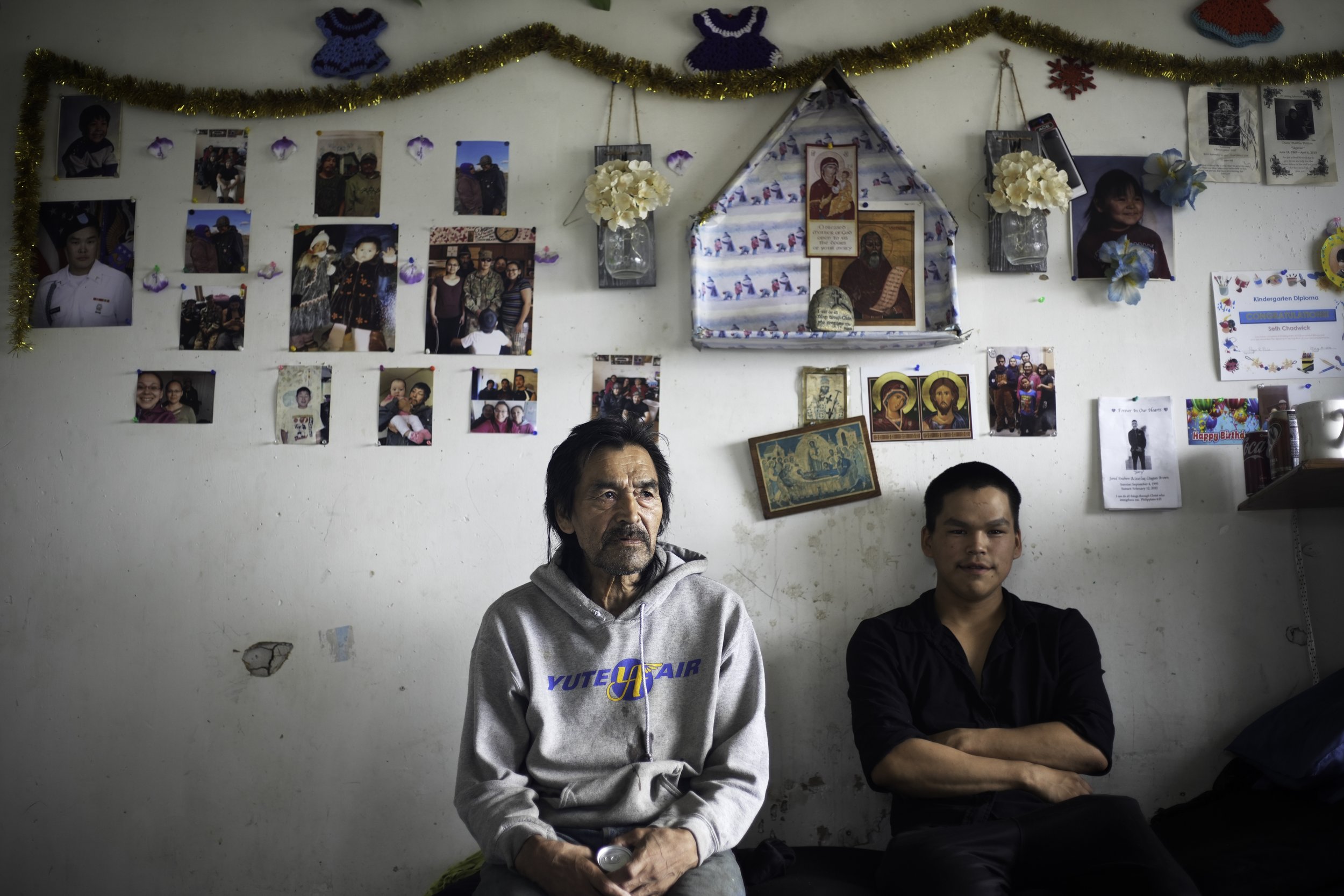
Graham and Curt: This is a portrait of Curt and his Yupi (Granddad) Graham. The background reveals traditional Yupik family memorabilia and trinkets as well as the influence of the Moravian church on native culture.

Seth and Green #2: Two friends playing.
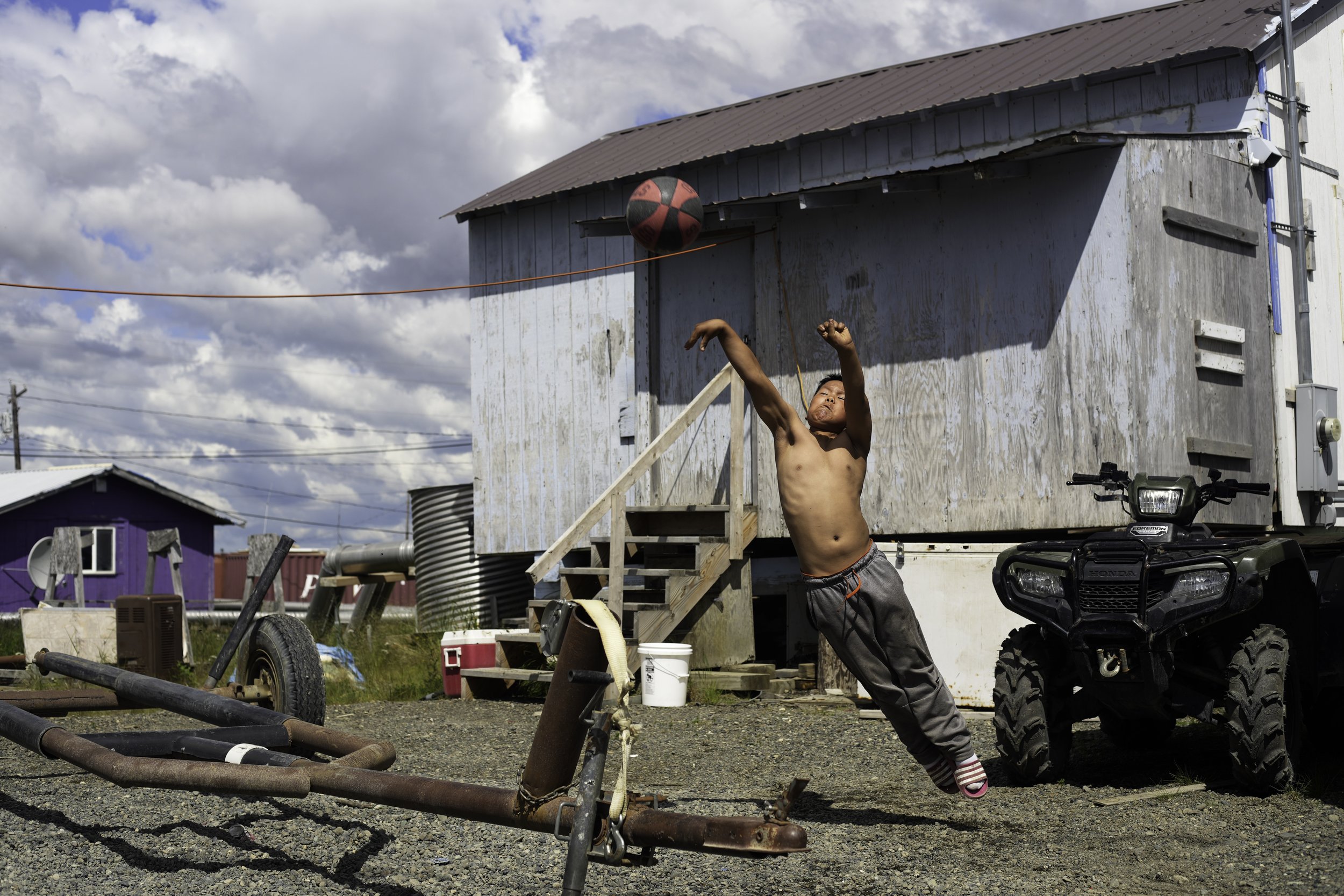
Seth Shooting A Basketball: “Basketball is important due to the togetherness it brings to the communities. Each school and village play to represent their hometown. It is not just a game; we do it for our community.” -Teyana Brown
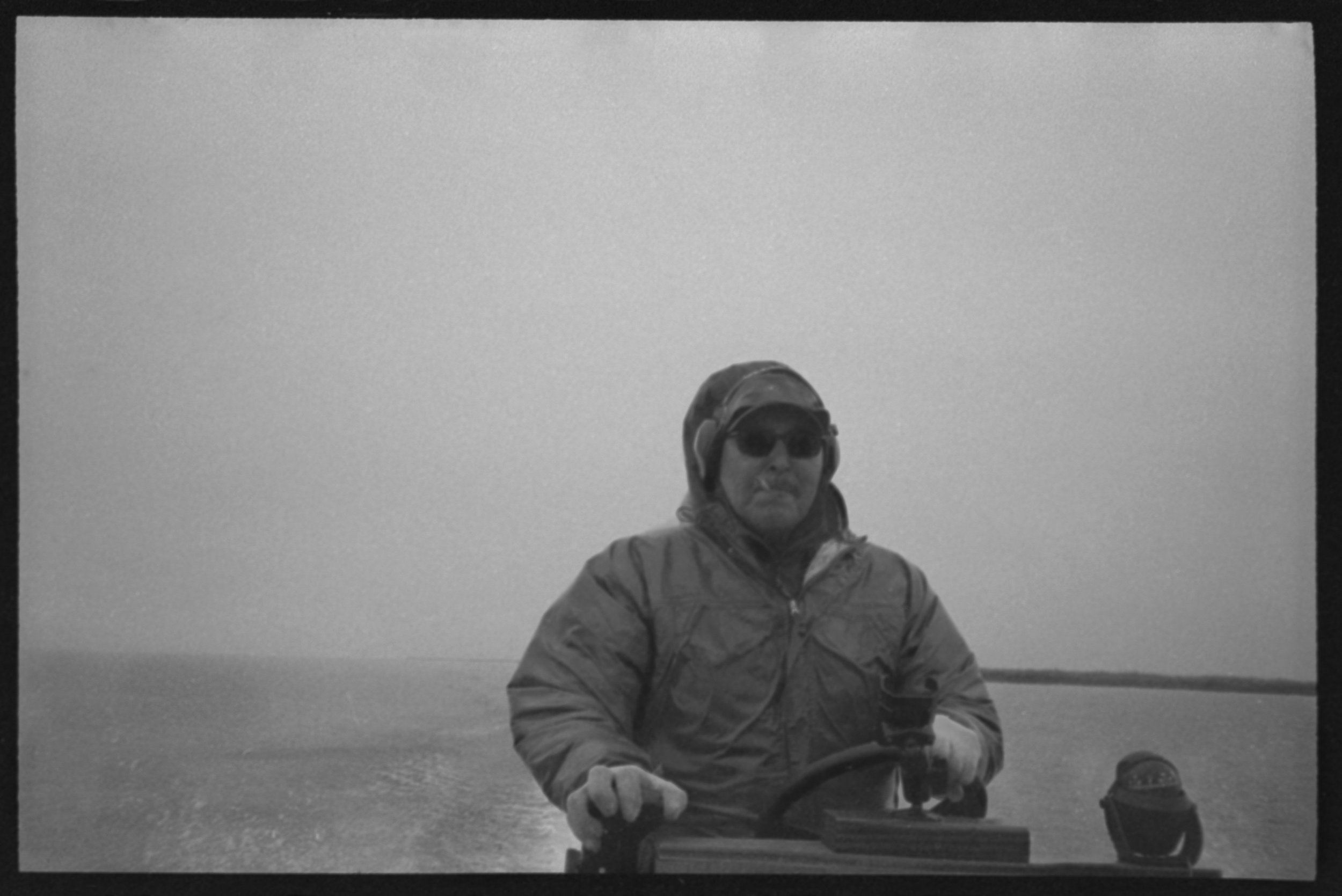
Warren and the Sea: Warren is driving a boat along the coast of the Bering Sea during a king salmon fishing trip.
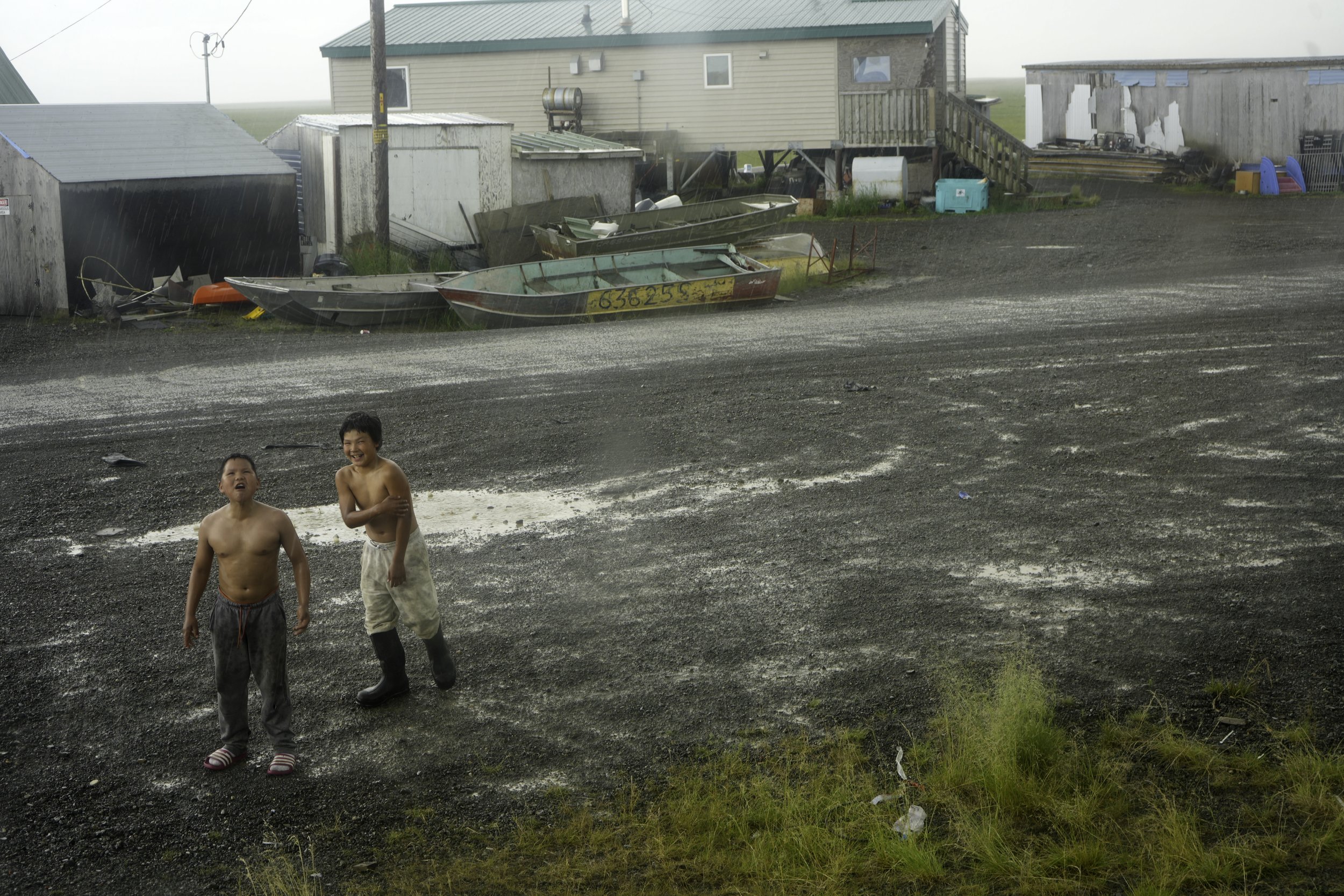
Seth and Green: Two friends enjoying the rain before Seth’s Yupi complained about them catching colds.
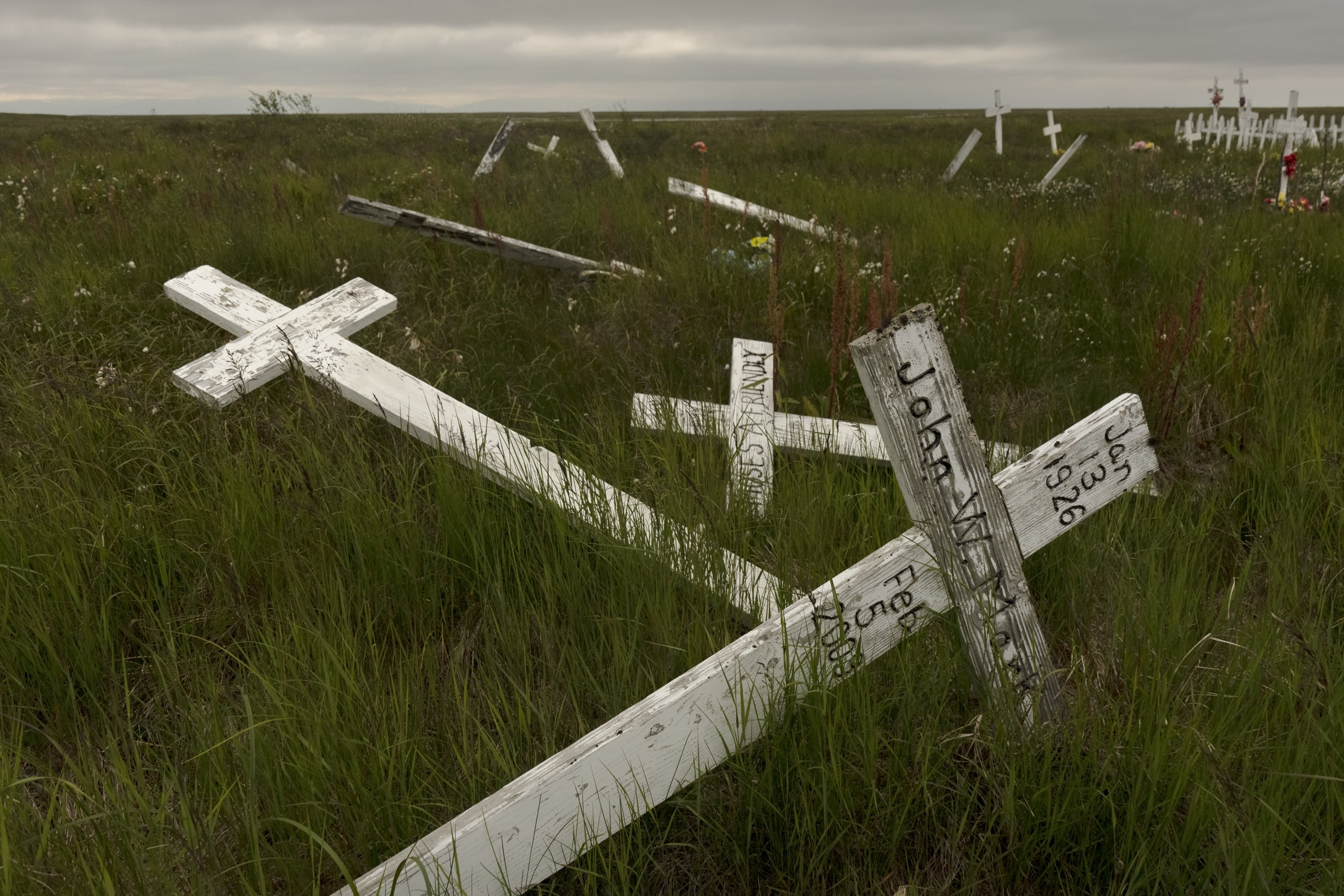
Crosses on the Tundra: The first Moravian church missionaries reached the Kuskokwim River and held a worship service in 1885, enforcing Christianity on the native population. This forced conversion explains why the burials are marked with crosses. As climate change causes the permafrost to melt and sea levels to rise, the tundra becomes saturated with water, disturbing the burial grounds and causing grave markers like these crosses to tilt and fall over.

Jordan Cleaning Fish: Jordan is cleaning a headed and gutted fish in the river. To his left one can see a handmade Uluaq (fish knife)

Filleting Fish
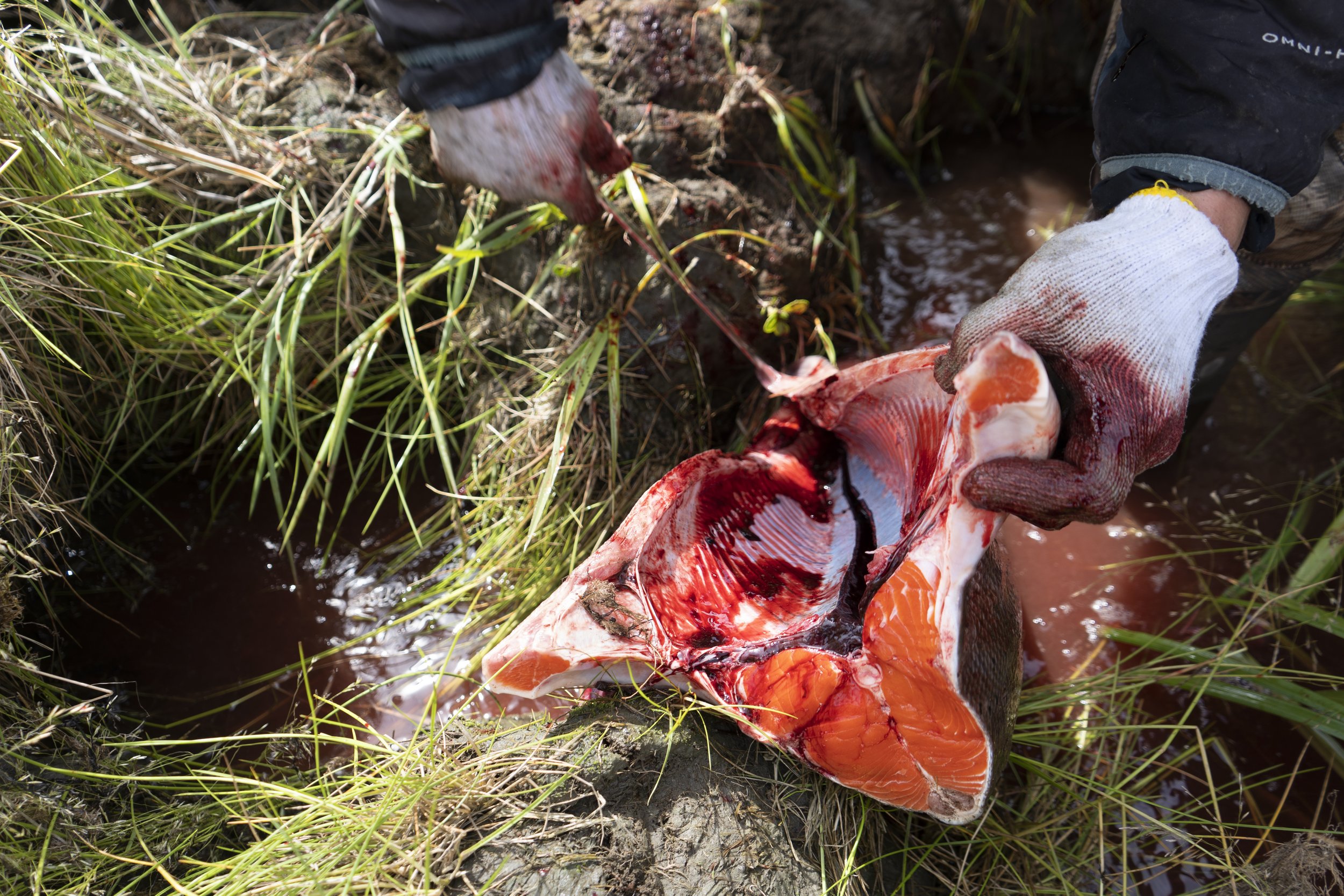
Warren Gutting a Fish: The yupiit follow a substance based lifestyle out of respect for tradition, but also to help deal with the high levels of inflation. Due to the remote location of the village and the lack of roads on the tundra, all store-bought materials must be shipped in to the village, which leads to higher prices in the store. In this photograph, Warren is heading and gutting a salmon after net fishing on the Bering sea. He does this out of respect for the fish and it’s yua (soul). But he also allows the entrails that are not edible to return to the water, keeping them away from the village.
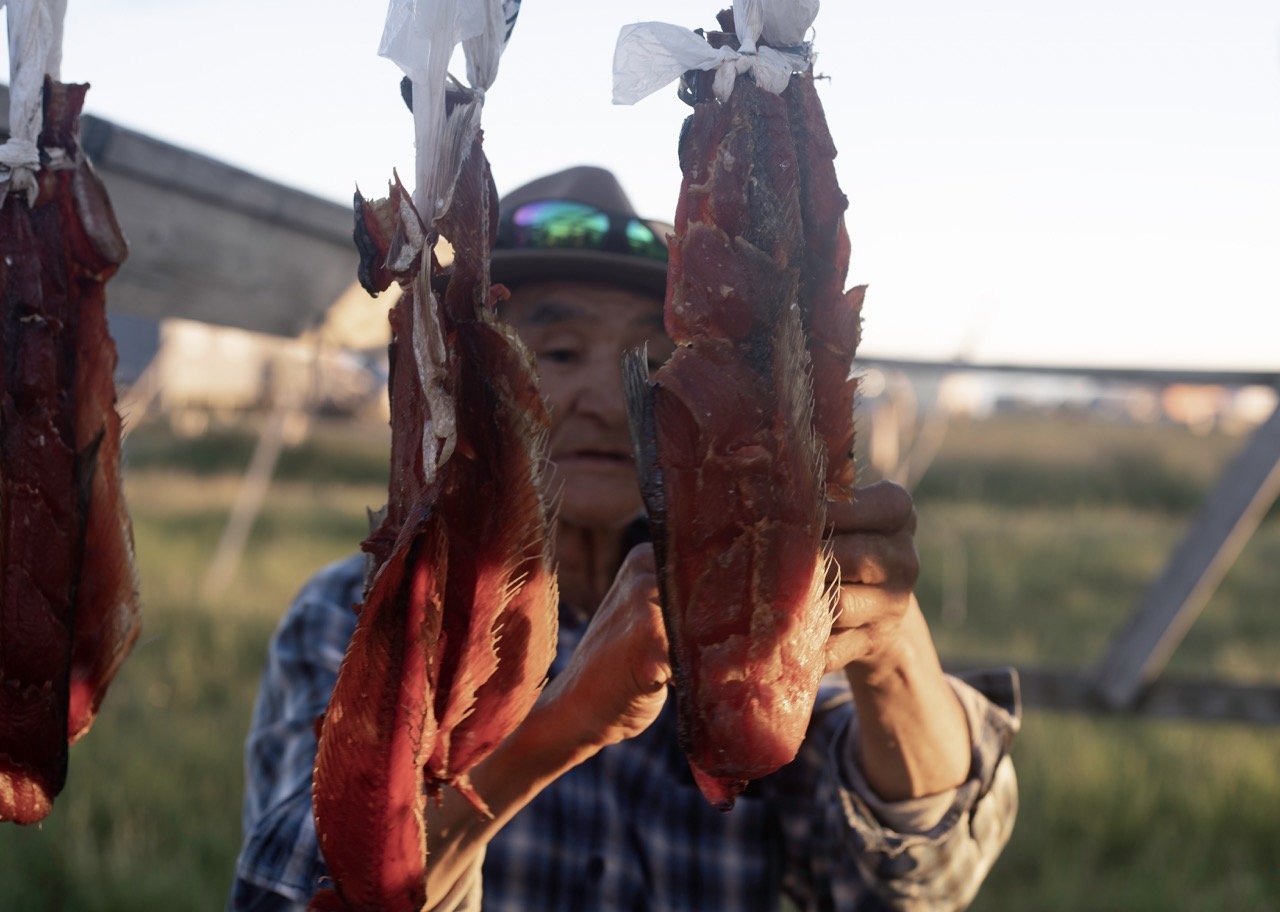
Nick and his Fish Rack: Fish racks are used to age fish and prepare them for storage. The racks can be passed down through generations.
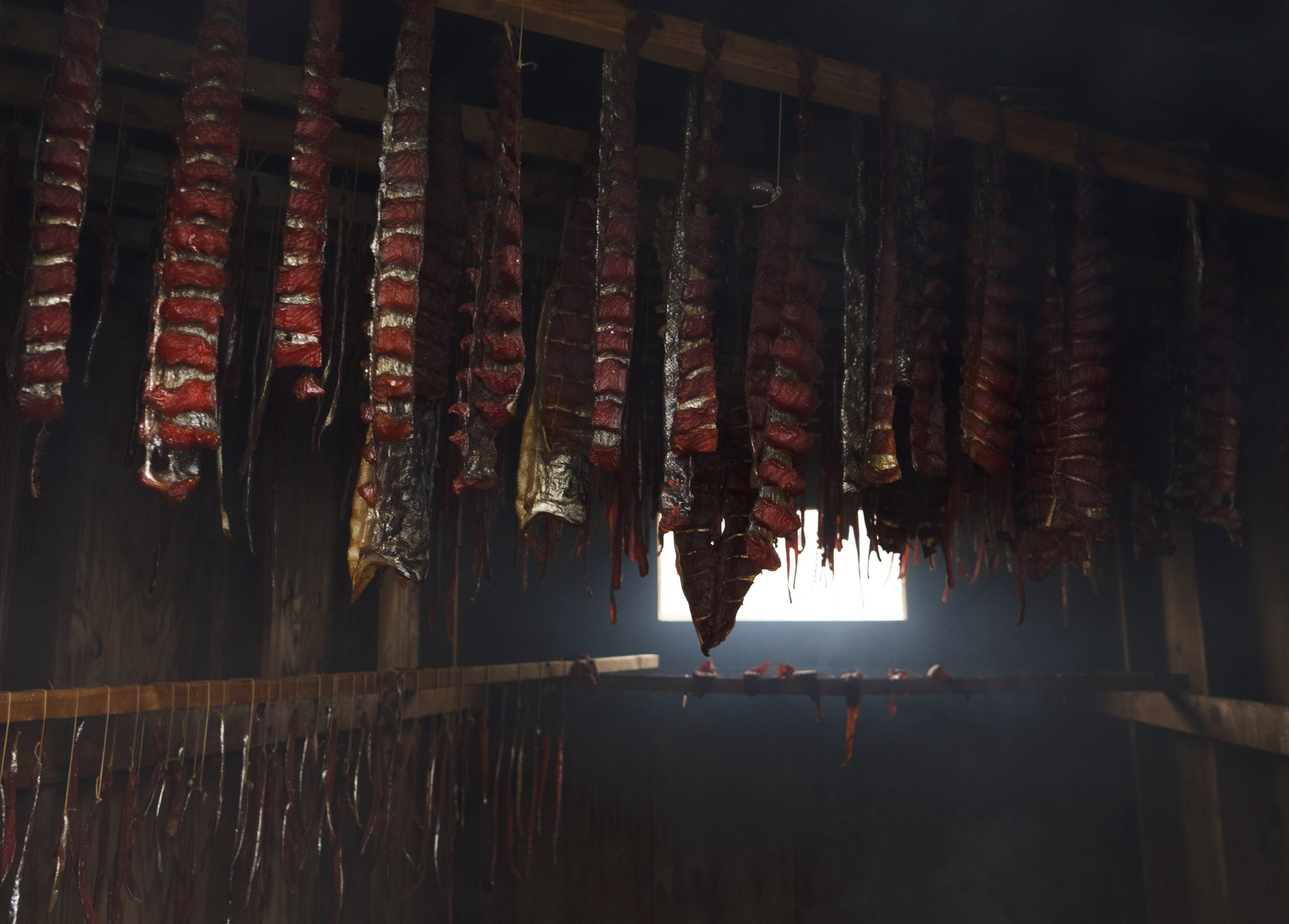
Smoke House: Smoking meats is an old tradition that is passed down through the generations to cook meats slowly; this stops bacteria from infecting the meat. The smokehouse is typically used during the summer months by the Yupik to prepare fish / food for storage during the freezing winter months. The Yupik name for the structure is elagyaq or puyurcivik.
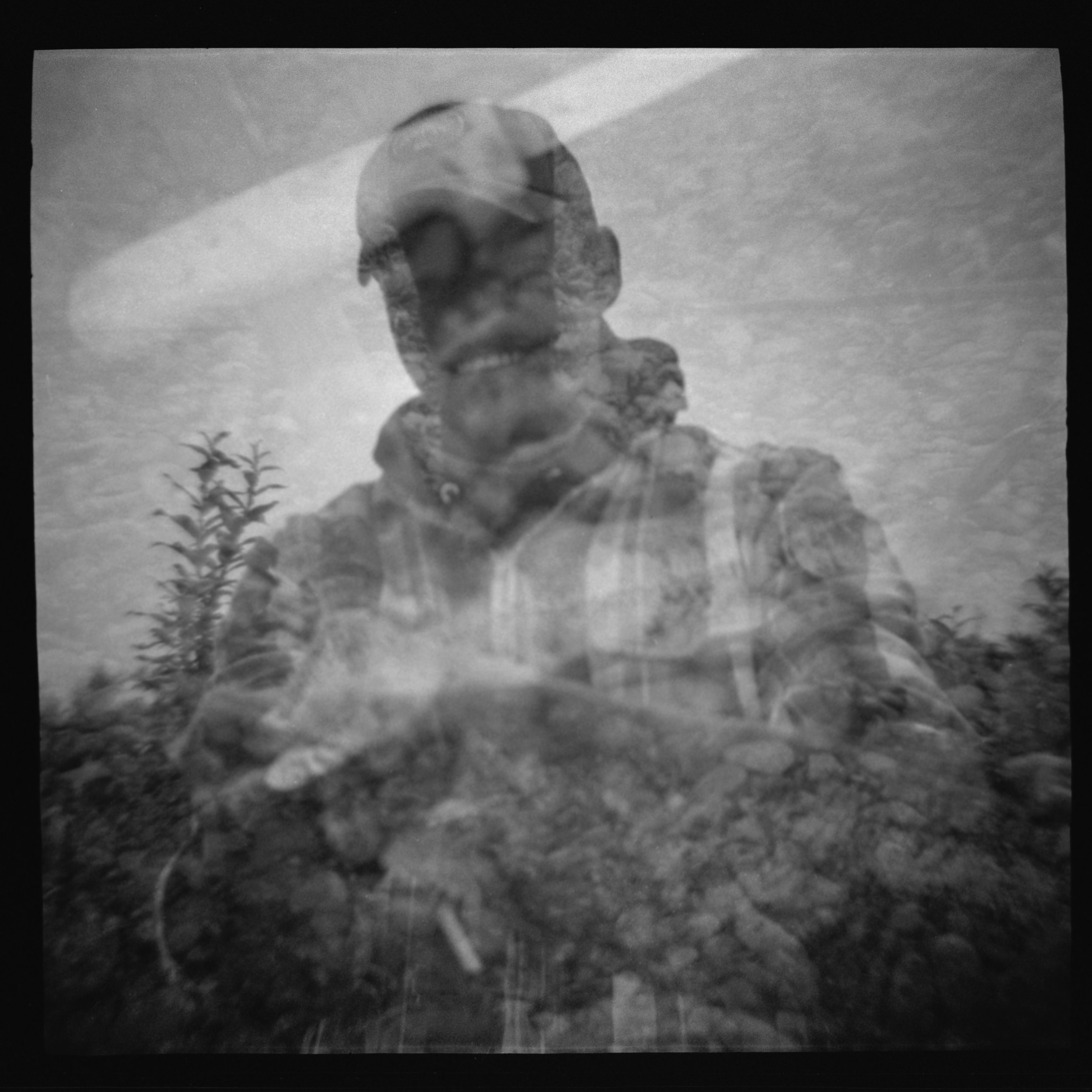
Kass'aq: Kass'aq means Caucasian in Yugtun, the native Yupik language.